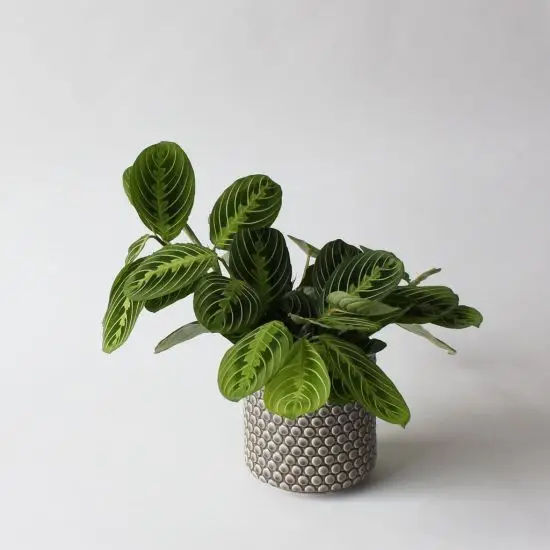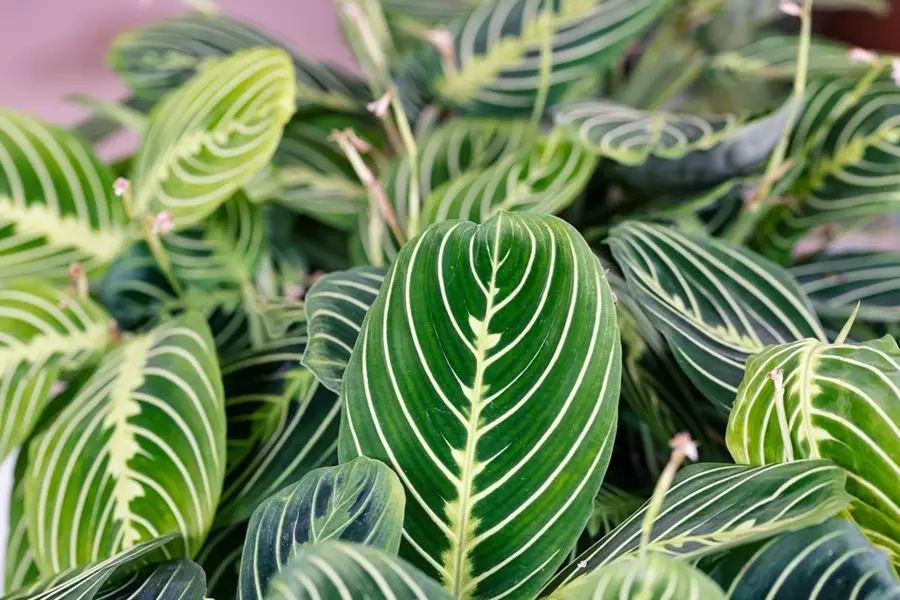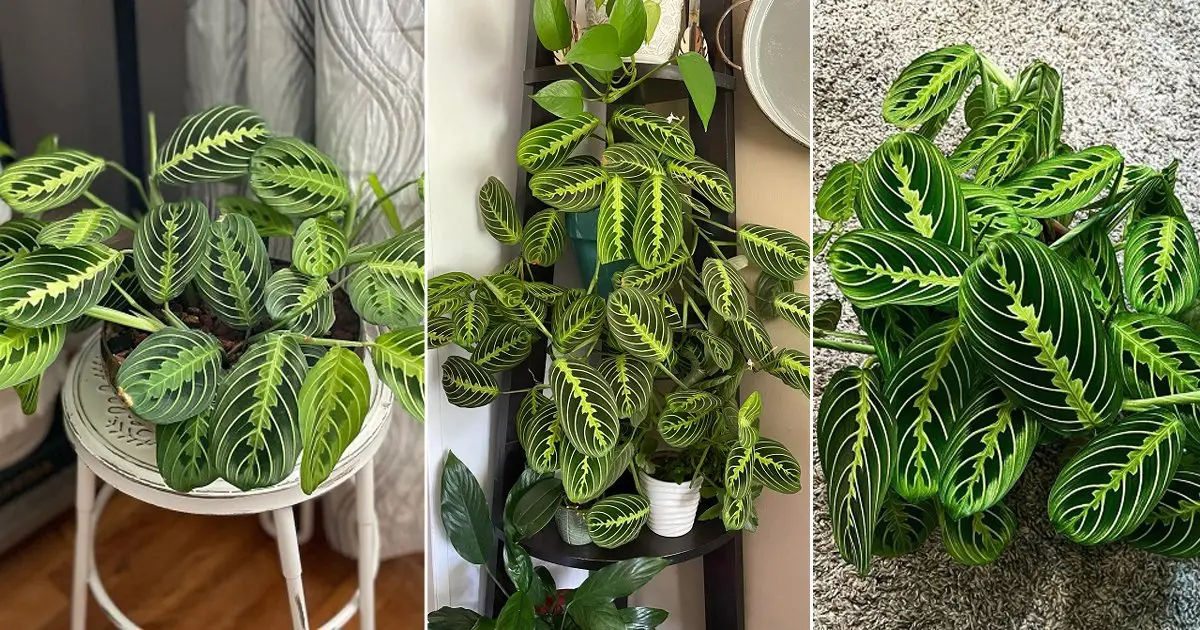The lemon lime prayer plant care, also known as Maranta leuconeura ‘Fascinator Tricolor’, is a popular choice for indoor houseplants due to its striking foliage. This plant features large, elongated leaves with vibrant shades of green, yellow, and pink, making it a beautiful addition to any room. However, like any other houseplant, the lemon lime prayer plant requires proper care and attention to thrive. In this article, we will discuss everything you need to know about caring for your lemon lime prayer plant, from its basic requirements to troubleshooting common problems.
1. Getting to Know Your Lemon Lime Prayer Plant

The Origin and Characteristics of the Lemon Lime Prayer Plant
The lemon lime prayer plant is native to tropical rainforests in Brazil and has become a popular houseplant due to its low maintenance and beautiful foliage. It belongs to the Marantaceae family and is closely related to the calathea and stromanthe plants. The plant’s oval-shaped leaves are marked with dark green stripes and veins, while its undersides are a deep shade of burgundy. The most distinctive feature of the lemon lime prayer plant is its tendency to fold its leaves upward at night, resembling hands clasped together in prayer.
Basic Requirements for Growth
Like most houseplants, the lemon lime prayer plant thrives in a warm and humid environment with indirect sunlight. Ideally, it should be placed near a north-facing window where it can receive bright, filtered light. Direct sunlight can scorch the plant’s delicate leaves, so be sure to protect it from harsh afternoon sun. The ideal temperature range for the lemon lime prayer plant is between 65-80°F (18-27°C). It also prefers well-draining soil that is kept consistently moist but not waterlogged.
Propagation Methods for Reproduction
If you want to expand your collection of lemon lime prayer plants, the good news is that they are relatively easy to propagate. The most common method is through division, which involves separating the plant’s root ball into smaller sections and repotting them in individual containers. You can also propagate using stem cuttings, by taking a healthy stem with a few leaves attached and placing it in water until it develops roots. Once rooted, you can transfer the cutting to a pot with soil.
2. Daily Care for Your Lemon Lime Prayer Plant

Watering Tips for Optimal Growth
As mentioned earlier, the lemon lime prayer plant prefers consistently moist soil, but overwatering can lead to root rot. To determine when your plant needs watering, check the top inch of soil – if it feels dry, it’s time to water. During the warmer months, you may need to water once or twice a week, while in winter, you can decrease the frequency to once every two weeks. Use room temperature water and make sure to drain any excess water from the pot’s saucer to prevent standing water.
Fertilizing Schedule for Healthy Growth
Fertilizing is an essential aspect of caring for houseplants, and the lemon lime prayer plant is no exception. During the growing season (spring and summer), you can fertilize your plant once a month using a balanced liquid fertilizer diluted to half strength. Avoid fertilizing during winter when the plant is in its dormant stage. Over-fertilizing can cause leaf burn, so be sure to follow the instructions on the fertilizer package carefully.
Pruning and Grooming Your Plant
Pruning is not necessary for the lemon lime prayer plant, but removing any dead, damaged, or yellowing leaves can help keep the plant healthy and promote new growth. You can also pinch off the tips of the plant’s stems to encourage bushier growth. Grooming involves regularly wiping down the leaves with a damp cloth to remove dust, which can hinder the plant’s ability to absorb light and air.
3. Troubleshooting Common Problems

Pests and Diseases to Watch Out For
The lemon lime prayer plant is generally pest-resistant, but it can still fall victim to common houseplant pests such as spider mites, mealybugs, and aphids. To prevent an infestation, regularly inspect your plant for any signs of pests and treat them immediately using natural remedies or insecticidal soap. The plant is also susceptible to root rot if overwatered, so be sure to check the soil’s moisture level before watering.
Dealing with Brown Leaf Tips and Edges
Brown leaf tips and edges are often caused by low humidity levels, dry soil, or excess salts in the soil from fertilizers. Increase humidity levels by misting the plant or placing it on a pebble tray filled with water. Water the plant thoroughly and allow any excess water to drain out to flush out excess salts. Trimming off the brown edges can also help, but make sure to use clean, sharp scissors to avoid further damage.
Reviving a Wilting Plant
If your lemon lime prayer plant starts to wilt, it could be due to underwatering, overfertilization, or root rot. First, check the soil’s moisture level and adjust your watering schedule accordingly. Flush out any excess salts or fertilizer build-up by heavily watering the plant and allowing it to drain thoroughly. If the plant continues to wilt, repot it into fresh, well-draining soil to prevent root rot.
FAQ

Q: Does the lemon lime prayer plant require high humidity?
A: While the lemon lime prayer plant prefers high humidity, it can tolerate average room humidity levels. However, to promote optimal growth and prevent browning of leaf tips, it’s best to increase humidity levels using a humidifier or other methods.
Q: Can I place my lemon lime prayer plant in direct sunlight?
A: No, the lemon lime prayer plant is sensitive to direct sunlight and can suffer from leaf burn. Place it near a north-facing window for bright, indirect light.
Q: How often should I fertilize my lemon lime prayer plant?
A: Fertilize your lemon lime prayer plant once a month during the growing season (spring and summer) using a balanced liquid fertilizer diluted to half strength.
Q: Why are my plant’s leaves turning yellow?
A: Yellowing leaves can be caused by various factors, including overwatering, low humidity, pest infestation, or nutrient deficiencies. Check the soil’s moisture level, increase humidity, and inspect the plant for pests to determine the cause.
Q: Can I trim my lemon lime prayer plant’s leaves?
A: Yes, you can remove any dead, damaged, or yellowing leaves to promote new growth and keep the plant healthy. Just make sure to use clean, sharp scissors to avoid further damage.
Conclusion

The lemon lime prayer plant is a gorgeous houseplant that can add a pop of color to any room. With its unique foliage and low maintenance needs, it’s no wonder why it has become a popular choice for indoor gardening enthusiasts. By following the tips and tricks outlined in this article, you can ensure that your lemon lime prayer plant stays healthy and vibrant for years to come. Remember to pay attention to its basic requirements, regularly care for it, and troubleshoot any problems that may arise. With proper care, your lemon lime prayer plant will flourish and bring joy to your home.
